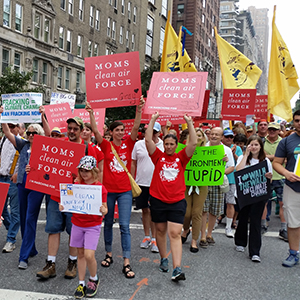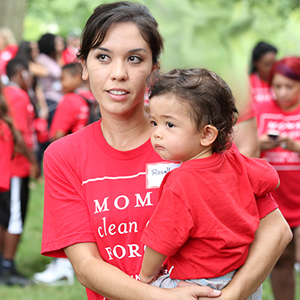This resource has been factchecked by policy experts, using the latest scientific research. Find all our sources linked below.
How pipeline leaks affect our communities
A network of nearly 3 million miles of pipelines transports natural gas around the United States. They crisscross the country and are everywhere—in our neighborhoods, cities, parks, and rural communities—though they are mostly out of sight. Leaks from these pipelines are a major source of methane pollution contributing to our changing climate. While the term “natural gas” has been used by the industry for years to describe gas derived from fossil fuels, its primary component is methane, a potent greenhouse gas that accelerates the climate crisis. Pipeline leaks also pose safety, health, and equity concerns all across the country.
Pipeline leaks of methane—from old and new pipes—can be caused by severe weather, punctures, corrosion, and malfunctioning equipment. Finding and fixing pipeline leaks can reduce climate pollution, improve community safety, and help protect public health. But for many years, the oil and gas pipeline industry has not been held accountable for finding and fixing leaks. Stronger standards and enforcement are needed to protect people from leaking pipelines, especially those disproportionately impacted by pipeline pollution.

Pipelines 101
Once methane gas is extracted from the earth, it’s transported across the supply chain to end users via pipelines, rail, or road. Pipelines used to be made of cast or wrought iron, which can degrade over time. Steel has been used for pipelines since around the 1950s, and starting in the early 1970s, plastic has been used for gas distribution pipelines. Regardless of material, there can be leaks.
Here’s a primer on the different types of gas pipelines:
- Gathering pipelines transport unprocessed gas from wellheads or production sites to processing facilities or transmission pipelines. Gathering pipelines have rapidly expanded as oil and gas production has increased. There are now over 400,000 miles of gathering lines in the U.S., some embedded in communities.
- Transmission pipelines are wide diameter pipelines used to transport methane gas long distances—even across state lines. They operate at high pressure, relying on compressor stations to push the gas through the pipelines.
- Distribution pipelines are the small pipelines that run through our towns and neighborhoods to deliver methane gas to homes and businesses.

The dangers of pipeline leaks
Methane is not only a major accelerator of climate change, it’s also explosive, making it a safety concern. Incidents associated with pipeline leaks can lead to explosions and alarming fires, and can cause death, injury, and property damage.
Leaks from gathering pipelines, which transport unprocessed gas that contains various chemical components, can expose nearby communities to methane and other harmful air pollutants, including nitrogen oxides, hydrogen sulfide, and volatile organic compounds (VOCs) such as benzene. Unregulated gathering pipelines can be located near populated neighborhoods, putting residents’ health and safety at risk. These pollutants can increase the risk of certain cancers, lead to preterm birth and low birth weight, and exacerbate respiratory issues like asthma.
Across oil and gas infrastructure, leaking methane along with toxic co-pollutants can contribute to the formation of ground-level ozone pollution, also known as smog, which can aggravate asthma and other lung diseases. Ozone exposure has also been linked to increased risk of heart attacks and adverse birth outcomes. This makes nearby residents, outdoor workers, pregnant people, and children particularly susceptible to the health and safety risks of pipeline gas leaks.

Pipelines and environmental justice
Gas pipelines tend to burden historically marginalized communities of color already impacted by other forms of pollution, making them an environmental justice concern.
One study on local gas distribution pipelines found the average leak density was 37% higher in communities of color, compared to predominantly white neighborhoods. It also found a decrease in leak density with an increase in income. Another study found that counties with more socially vulnerable populations had a higher density of these gathering and transmission pipelines overall. The Centers for Disease Control and Prevention measure social vulnerability by breaking it down into four components: socioeconomic status, minority status, household composition, and housing/transportation.

Improving pipeline safety and reducing methane emissions
Pipeline leaks are a major source of methane and other harmful pollution across the United States that puts the health and safety of people at risk while contributing to global warming. Strong and comprehensive standards requiring operators to detect pipeline leaks and quickly fix them are urgently needed. This includes transparent reporting by operators so that the U.S. Pipeline and Hazardous Materials Safety Administration (PHMSA) has access to up-to-date information about pipeline leaks, leak mitigation, and the extent of methane emissions. The public—including residents of impacted areas—should also be able to obtain clear information on the impact of leaks in their neighborhoods.
People who are concerned can join Moms Clean Air Force to demand that our government enact stringent pipeline protections, reduce air pollution, and foster better health for all—especially our children. Safety and climate change can’t wait.
Full list of sources.
Released: November 2024




